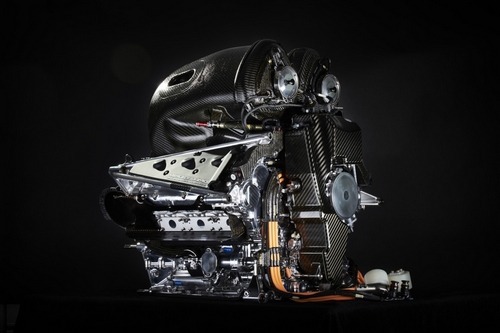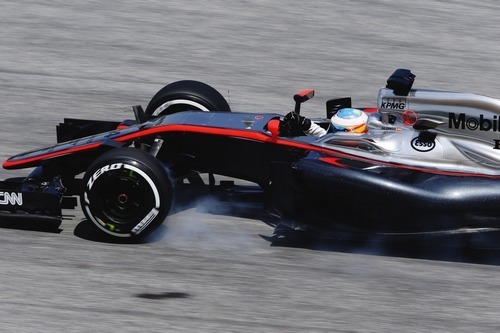
With a power unit shortage looming over Lewis Hamilton’s head, we saw Mercedes take three new power units over the course of the weekend in Belgium, giving them more than enough power units to complete the season. But should this kind of rule exploitation be allowed in Formula One?

How did Mercedes manage to get three brand new power units? It’s really quite simple. The FIA currently has limits restricting the number of power unit components that each driver can use throughout the course of the season. These regulations are in place to prevent big budget teams from gaining a performance advantage by replacing the power unit more frequently than other teams. Once drivers go over the power unit allocation for the season, they are handed a grid penalty for that race.
In this situation, Mercedes new that they would need two power units in order to complete the season. Before the first session of the weekend in Belgium, the team swapped out the power unit. This gave them a 15 place grid penalty under the regulations. They put that power unit into storage and took another power unit before the second practice, thus increasing their penalty to 30 places. Since there are only 22 cars on the grid, they would automatically start last, but more penalties wouldn’t impact their starting position. It was a no-brainer for the team to take a spare power unit before Saturday’s sessions, pointlessly increasing their penalty to 55 places. The FIA later added an additional 5 places for changing the gearbox.

Although this power unit stockpiling and penalty stacking is legal under the regulations, it has exposed a massive hole in the regulations. However, it’s not as though this is the first time that this penalty stacking has occurred. McLaren ran into some troubles with their new Honda power unit in 2015 and they served a grid penalty of over 22 places on four occasions throughout the season, with the biggest being a 70 place grid penalty for Jenson Button in Mexico, as well as 50 places for Button and 55 places for Fernando Alonso in Belgium. In fact, Alonso was penalized 60 places at this year’s Belgian Grand Prix for changing power unit components.
There are a few reasons why not many people were really concerned about this regulation hole last season. Firstly, it was happening to the McLaren, but they weren’t competitive and were not in the position where their results played a huge factor in the championship race. And what McLaren did last season was not as much of an exploitation as what Mercedes has just done. Yes, McLaren did use well over their allocation of power unit components, but they only took power units when they needed a new one, meaning that they were penalized multiple times throughout the season. Mercedes has just stockpiled three power units and hasn’t really been penalized for it. Now they are home-free.
What needs to be done, is the grid penalties need to carry over to the next race when they exceed 21 places. Why 21 places, because anything over a 21 place grid penalty is pointless because the driver is already at the back of the grid. This way, any team that stacks penalties will need to actually serve out their punishment. For example, if someone gets a 40 place grid penalty, the FIA should put the driver at the back of the grid and deduct 21 places from the penalty. This means that the driver would need to serve a 19 place grid penalty at the next race.
There are people that would simply want the entire penalty to continue to carry over until it is fully served, but that isn’t a good idea. Regulations like the power unit allocation violations were designed with the smaller teams and under-performing teams in mind. That’s why there is some logic to the FIA’s current penalty structure. In a case like McLaren in 2015, they would have never served their entire penalty before the end of the season and no one wants to see a team have that kind of disadvantage, especially a team that is pushing to try and improve their results. The rules don’t really consider that a top performing team can do what Mercedes did. If you deduct 21 places from the penalty each race, it really lowers the damage for the smaller teams.
Allowing teams to stockpile power units completely defeats the purpose of the power unit allocation. There is currently nothing stopping a team from taking more than 20 new power units, starting the opening race of the season from the rear of the grid and then changing to a new power unit every race in order to get maximum performance. And the FIA shouldn’t really have the blame for these regulation loopholes because these are situations that no one had thought of when the regulations were made. Honestly, it is impossible for the FIA to predict every single scenario before it happens.

Although the stockpiling situation that we saw with Mercedes in Belgium was not technically against the regulations, it was still wrong and is something that needs to be fixed in the future. It’s such a shame to see any team exploit the regulations and it really isn’t fair for the teams that go by the book. Now the team is home-free for the rest of the season with no risk of further power unit penalties. It essentially gives Lewis Hamilton a free-pass and really hinders Nico Rosberg’s chance to take the World Drivers’ Championship title.
Hamilton’s Grid Penalty Increased To 55 Places
Hamilton To Drop 30 Places On Belgium Grid
Hamilton Grid Penalty Likely in Italy, Not Belgium
The views and opinions expressed in this article are solely those of the author and do not necessarily reflect the official policy or position of any other agency, organization, employer or company. Assumptions made in any analysis contained within this article are not reflective of the position of any entity other than the author.